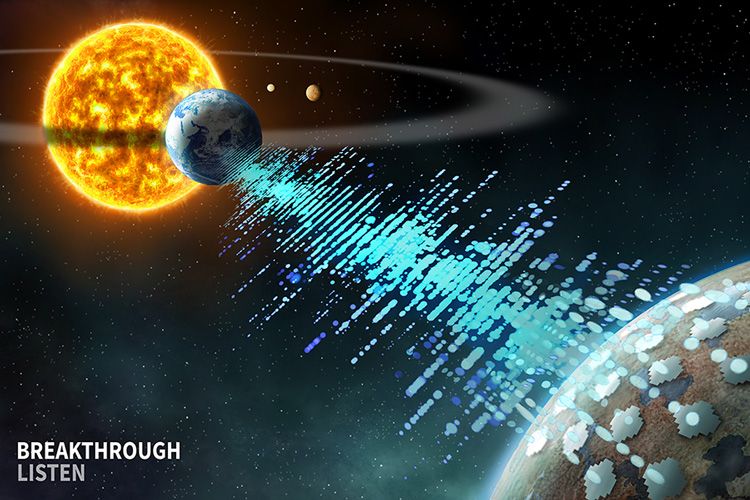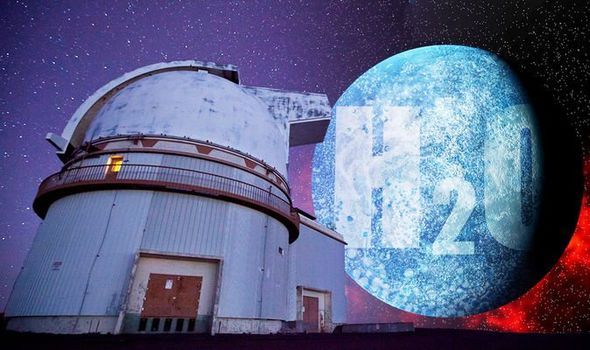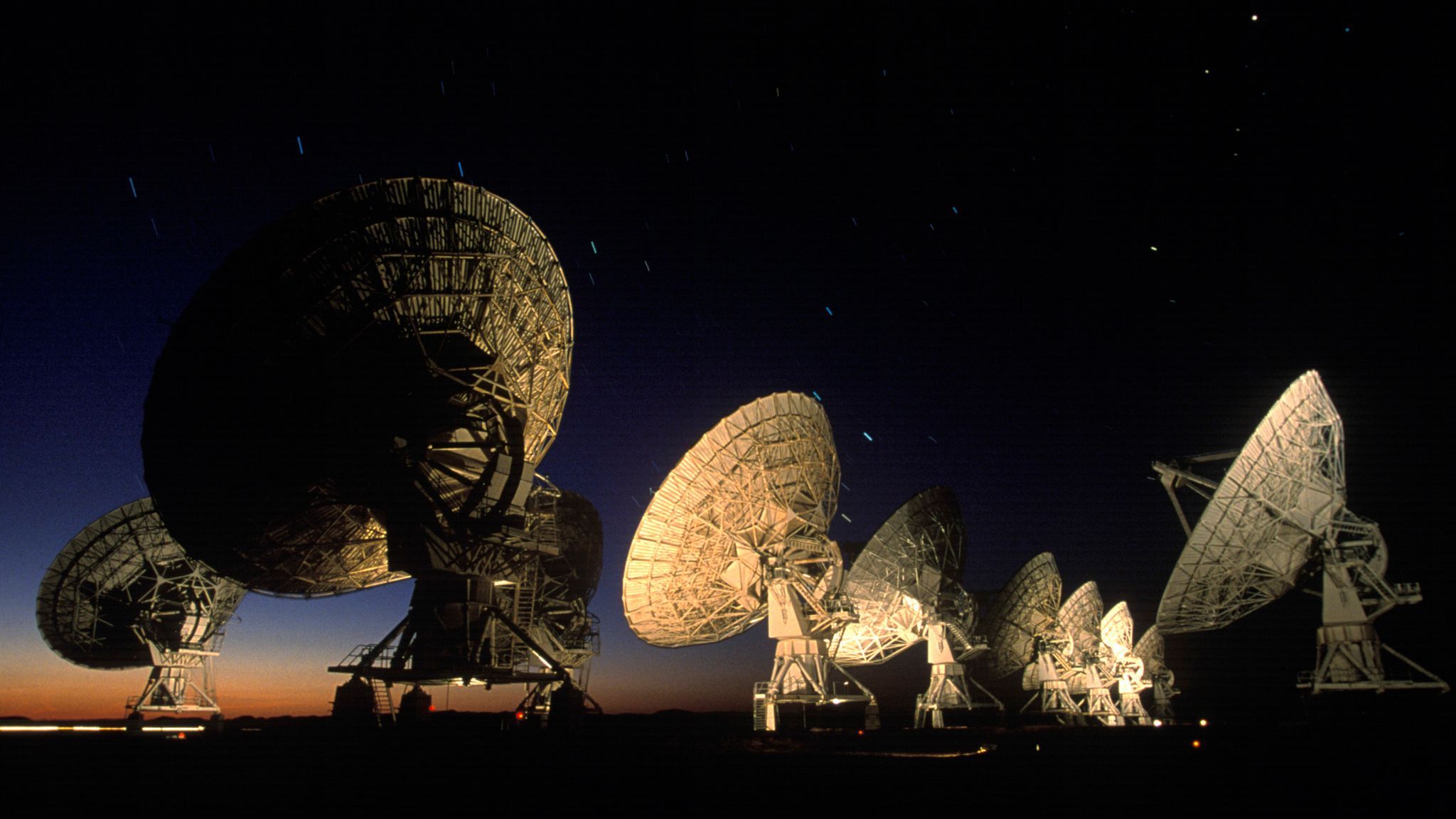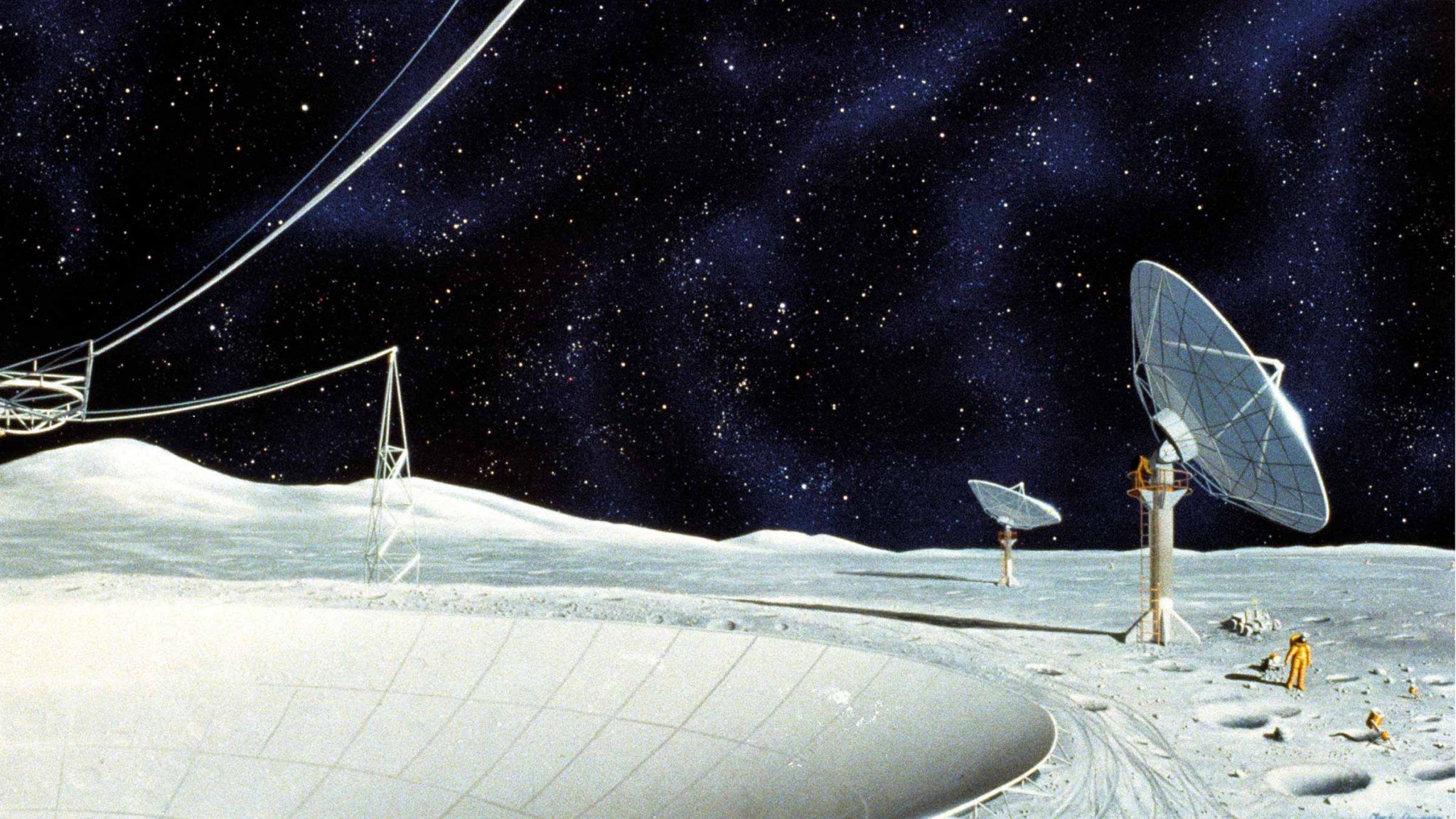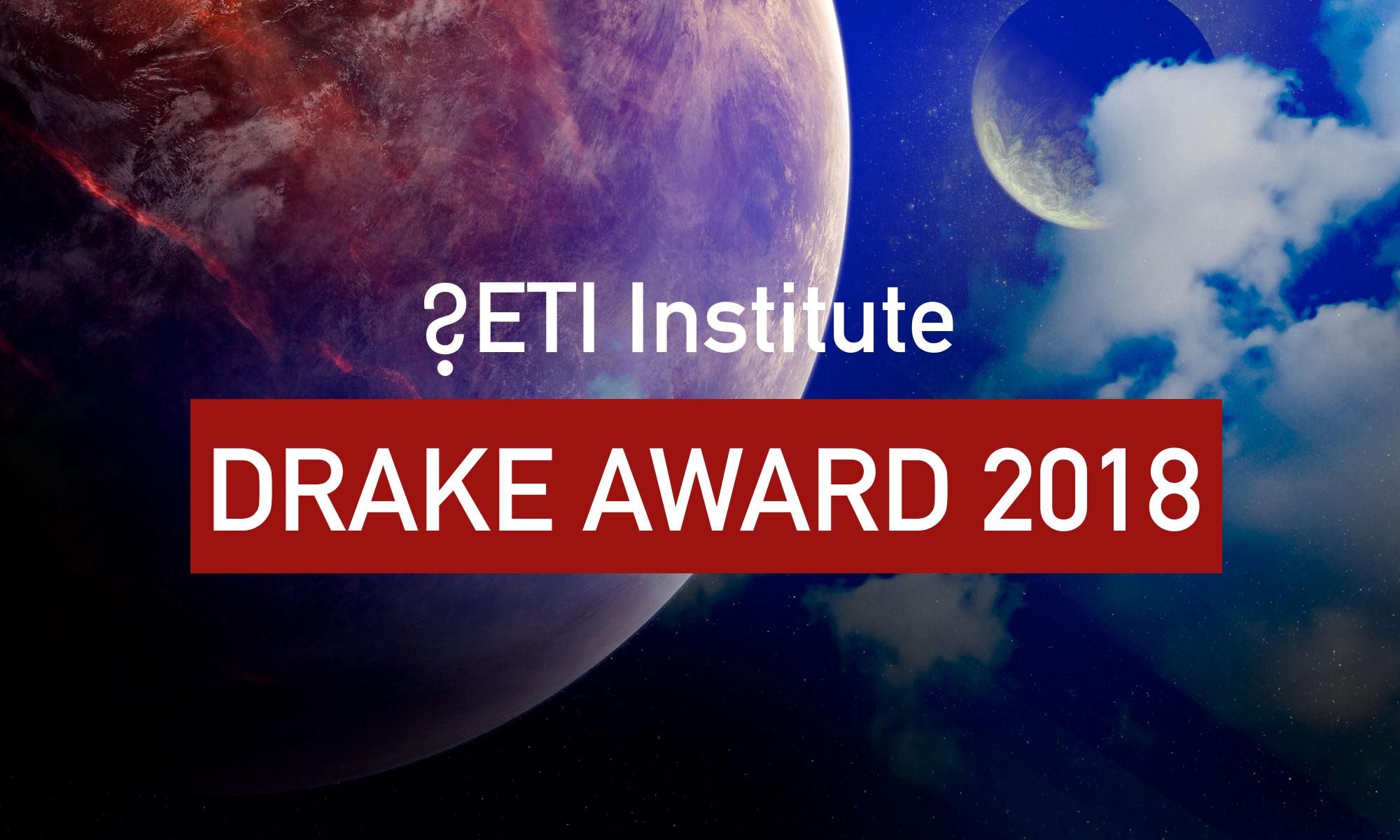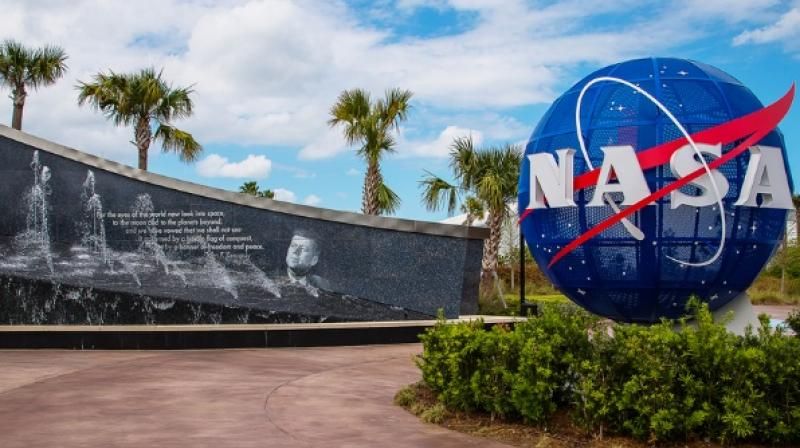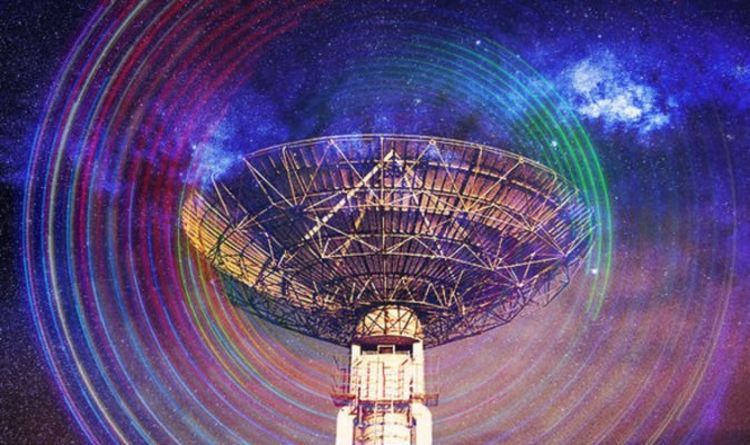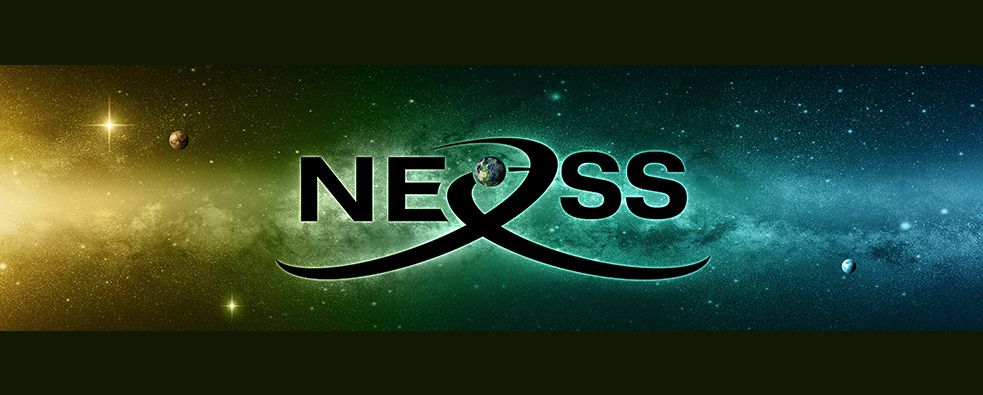A New Frontier in the Search for Extraterrestrial Life
Article by Adam Frank December 31, 2020 (washingtonpost.com)
• On December 18th, ‘Breakthrough Listen’ – a privately funded offshoot of SETI, the ‘Search for Extraterrestrial Intelligence’ – detected a distant “candidate signal” labeled BLC-1, which SETI astronomers would like to think is coming from another intelligent civilization in the galaxy. Of course, these scientists are quick to point out that it is probably not coming from another civilization, but just radio interference from our own planet.
• The Search for Extraterrestrial Intelligence began more than 60 years ago. Proponents of SETI have long complained that there has never been sufficient funding or telescope time available to make a dent in the effort. In the 1980s and 1990s, Congressional legislators withheld “wasteful” SETI funding, and it has survived since on private funding from millionaires like Yuri Milner who in 2015 pledged $100 million to create Breakthrough Listen.
• Jason Wright and his astronomy colleagues at Penn State have argued that the reason we have not found life elsewhere in the universe is simple: We haven’t really looked. If the galaxy were an ocean, so far astronomers have splashed around in just one hot-tub’s worth of water.
• With Milner’s funding, the Breakthrough Listen project was provided access to telescopes from the Parkes radio dish in Australia and the Green Bank instrument in West Virginia, and resources to explore new search methods and technologies. These include machine-learning initiatives designed to accelerate “classic” SETI research. Artificial intelligence can enable computers to identify those all-important ‘weirdness needles’ in the cosmic signal haystack of data. The next generation of instruments, including the soon-to-be-launched James Webb Space Telescope, should enable SETI astronomers to explore the atmospheres of smaller, Earthlike planets and search for the chemical imprint of an exo-biosphere.
• Meanwhile, the ‘exoplanet revolution’ opened a second frontier in the search for ET. In the mid-1990s, astronomers found the first exoplanet, a Jupiter-size world on a four-day orbit around the star 51 Pegasi. Today, we know that almost every star in the sky hosts a family of worlds. Scientists worldwide are building a census of alien planets, showing which stars have planets and which planets are in the star’s “Goldilocks zone,” where surface temperatures are just right (that is, anywhere between freezing and boiling) for life to form. As a result, astronomers can find out exactly where they should be looking for life and intelligence.
• Astronomers are also gaining the capacity to probe the atmospheres of distant planets for ‘biosignatures’. By interrogating light passing through a far-flung world’s gaseous veil, astronomers can compile its chemical inventory and see what’s in the planet’s atmosphere. Alien astronomers looking at Earth, for example, would see oxygen and methane in our atmosphere — a signature of life’s presence on our planet. Scientists have already explored the atmospheres of a few Jupiter-size exoplanets.
• But why stop at biosignatures? The presence of technology on a planet might be far more detectable than biology. Telescopes on the drawing boards right now might have the capacity to see city lights on distant worlds. In 2019, NASA awarded the first-ever research grant to study atmospheric technosignatures, with two more funded in 2020. All this means that the search for technosignatures is becoming just as plausible and just as important as the search for biosignatures, representing a thrilling new face of SETI, embracing both anomaly-based searches and targeted explorations of exoplanets and their environments.
• The truth about the search for intelligent exo-civilizations is that it’s probably going to take a lot of time and effort. That’s the price you pay for great science. This extraordinary journey — taking us to the shores of alien worlds — is really only just getting started. Something remarkable is happening in the science of life and intelligence beyond Earth. The age of “technosignatures” is dawning.
• [Editor’s Note] The boys at SETI are dedicated… dedicated, that is, to making sure that the average person remains woefully ignorant of the multitude of intelligent beings and civilizations that permeate our galaxy and universe. Seth Shostak and his accomplices at SETI are simply shills for the deep state. The deep state controls several secret space programs that interact constantly with mostly negative extraterrestrial beings, and have access to their advanced technologies which the deep state wants to maintain for themselves only, in order to preserve their advantage.
But it appears that 2021 will usher in a new level of disclosure of this underlying deep state cabal that has repressed the natural technological and spiritual development of the human species on this Earth since World War II, when the presence of extraterrestrial beings, both benevolent and malevolent, greatly increased in response to our species’ own technological achievements. Suddenly, Earth humans were a more interesting species to scrutinize, and more valuable to exploit. By using human (?) deep state operatives to infiltrate all aspects of government and society, these negative beings orchestrated a false reality which has supported their control agenda for the past seventy years.
We have a unique opportunity now to expose this deep state cabal and the negative extraterrestrial entities that have given this cabal its capacity to control the planet. The time has come to reclaim the planet for our own species, as the benevolent beings and our human cousins of the Galactic Federation have urged us to do. They won’t step in and do it for us. We must save ourselves. It appears that President Trump has declared war on the deep state, and this much anticipated transition has begun.
We are living in the most fantastic period in human history. It is just a shame that more people have not yet awakened to recognize the battle between good and evil that is now unfolding. Once we have overcome our deep state oppressors, the human species will enter a golden age of higher spiritual consciousness and advanced technologies (available to everyone) that will transform our planet as we assume our rightful place among the multitude of space-faring civilizations which deep state operatives, such as SETI and the Washington Post, are desperately trying to prevent.
 On Dec. 18, the world learned that Breakthrough Listen, a privately funded search for extraterrestrial
On Dec. 18, the world learned that Breakthrough Listen, a privately funded search for extraterrestrial

intelligence, had found its first official candidate signal. The signal’s existence lit up the Internet. Was BLC-1, as it’s called, finally our moment of contact? Breakthrough Listen scientists, now hard at work on a paper about their findings, were quick to explain that the answer was probably “no”: Given the wealth of human-made radio signal interference out there, BLC-1 will probably turn out to be of human origin.
Their preliminary conclusion, however, does not defuse the excitement of BLC-1. The fact that there’s a candidate at all is cause for celebration. That’s because something remarkable is happening in the science of life and intelligence beyond Earth. The age of “technosignatures” is dawning.

Many people have the romantic notion that astronomers huddle over their telescopes every night and scan the skies looking for signals from distant, alien civilizations. That, unfortunately, just ain’t happening. Though the Search for Extraterrestrial Intelligence (SETI) began more than 60 years ago, there was never sufficient funding or telescope time available to make a dent in the effort. In the 1980s and 1990s, some in Congress cited public SETI funding (as little as it was) as a press-worthy example of wasteful spending. Government support mostly dried up, leaving the field running on fumes. As Jason Wright and colleagues at Penn State have demonstrated, if the sky is an ocean that needs to be searched for life, so far astronomers have splashed around in just one hot-tub’s worth of water. The reason we have not found life elsewhere in the universe is simple: We haven’t really looked.
Now, however, the long desert of opportunity may finally be giving way to a new era of growth. In 2015, Internet billionaire Yuri Milner pledged $100 million to create Breakthrough Listen, a next-generation radio-based search for extraterrestrial intelligence. With a single stroke, Milner helped rejuvenate the field: The project provided access to telescopes from the Parkes radio dish in Australia and the Green Bank instrument in West Virginia, and provided resources to explore new search methods and technologies. These include machine-learning initiatives designed to accelerate “classic” SETI research of the kind epitomized by BLC-1. As pioneered by Frank Drake and others (and popularized by the 1997 movie “Contact”), classic SETI searches for signals that are anomalous, as opposed to those originating from natural or human causes. Historically, the challenge has been that SETI observations produce tidal waves of data. But artificial intelligence can enable computers to identify those all-important weirdness needles in the cosmic signal haystack of all that data.
FAIR USE NOTICE: This page contains copyrighted material the use of which has not been specifically authorized by the copyright owner. ExoNews.org distributes this material for the purpose of news reporting, educational research, comment and criticism, constituting Fair Use under 17 U.S.C § 107. Please contact the Editor at ExoNews with any copyright issue.
